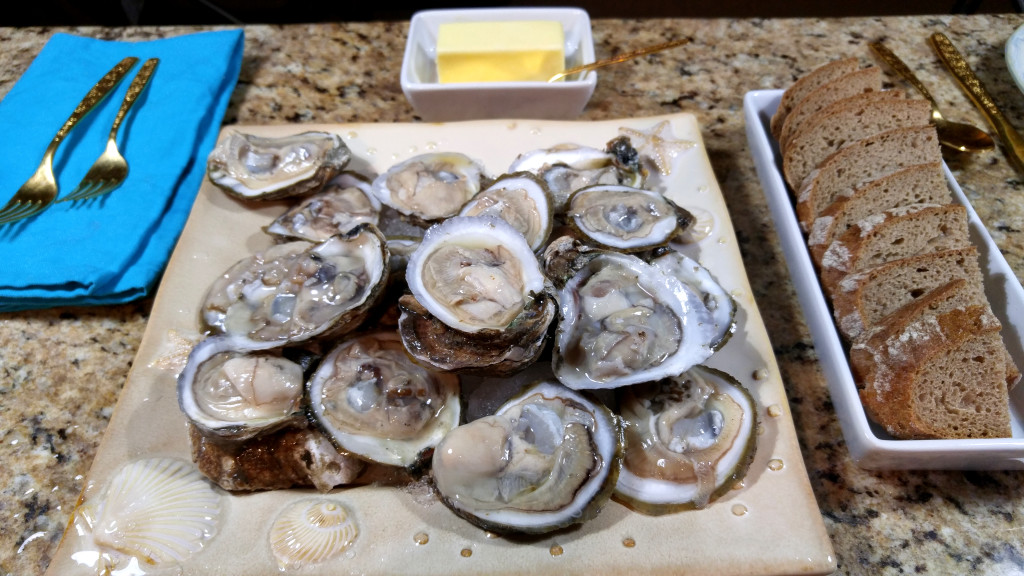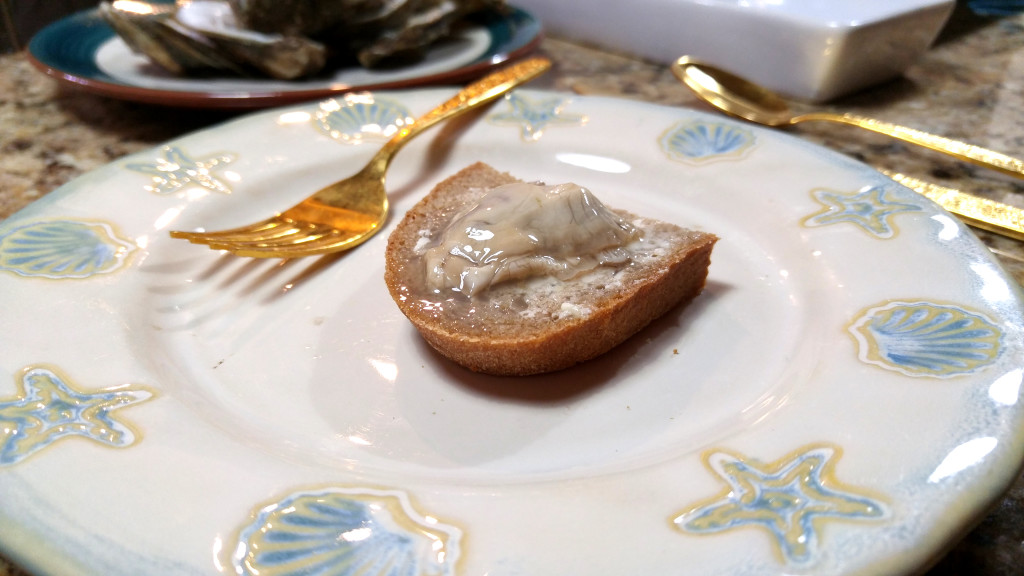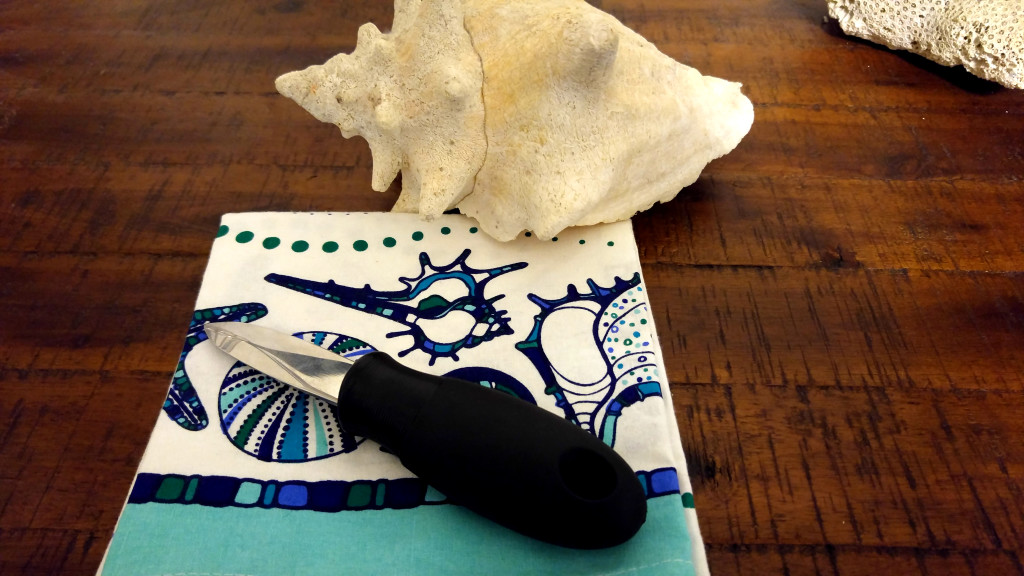Oysters on the Half Shell with Rye Bread and Unsalted Butter
Inspired by reading Julia Child’s memoir, My Life in France, I decided to re-create the first meal she experienced with her husband in France. It was a meal that she fondly remembered: “Our first lunch together in France was absolute perfection. It was the most exciting meal of my life.”[i]
She dined at Restaurant La Couronne, France’s oldest restaurant, which dates back to 1345. The meal started with half a dozen oysters on the half shell served with pain de seigle (rye bread) and unsalted butter. This preparation of oysters was new and intriguing to me. Typically, my husband and I eat Apalachicola Bay oysters on the half shell drizzled with lemon juice and served atop a saltine cracker with cocktail sauce and horseradish.
An Oyster atop a Slice of Buttered, Rye Bread
So how was this method of serving oysters? Wonderful! The butter provides creaminess, and the bread absorbs some of the salty brine and makes the dish more substantial than eating oysters alone or with crackers. The dish’s simplicity showcases the flavor of each ingredient.
There were some subtleties to this course that I could not reproduce at home, such as the butter served, beurre d’Isigny, which comes from a particular region in France and is supposed to be truly delightful. But I think I managed to capture the essence of the dish, and it turned out lovely! I recommend using fresh bread and European-style butter, if you can find it.
Because my husband and I love oysters, I couldn’t buy only 6, especially given that I wanted to practice shucking them. I bought 18, plus a few stragglers (some of the oysters were stuck to each other in clusters of 2 or 3, but no complaints here).
An Oyster Knife with a Conch Shell
If you’ve never shucked an oyster, here are a few helpful tips. An oyster knife is a must! It has a substantial handle and a short, relatively dull blade with a beveled, pointed tip. This knife will help you open the oysters without damaging the tender meat inside.
After you purchase your oysters, rinse them in cold water and thoroughly scrub them. A bristle scrub brush works well. Discard any open oysters. About an hour before you want to start shucking, put the oysters in the freezer. This makes them easier to shuck.
To shuck the oysters, you need a thick dishcloth or protective glove. Wrap the dish cloth around the oyster (the curved side of the oyster should be facing downwards, so you can cup it in your hand). Leave the hinge exposed and press the oyster knife’s tip into the hinge. Once it’s in, rotate the oyster knife back and forth while pressing in to crack the hinge. Then, slide the knife along the upper shell to detach the muscle—that will allow you to pop the upper shell off. If you want the oysters to slide off the half shell when served, use the knife to detach the muscle on the bottom too. During this process, try to keep the shell as even as possible, so you don’t spill any of the delicious brine. Then serve over crushed ice.
There’s the first course to Julia Child’s first meal in France. Stay tuned for the other courses, which I’ll be blogging about soon. In the meantime, bon appétit!
If you enjoyed reading this post, like my Facebook page and subscribe to my blog to follow my cooking adventures and flavorful journeys!
[i] Child, Julia. My Life in France. New York: Random House, 2006.






Pingback: Julia Child's Sole Meunière Recipe | Flavorful Journeys
Pingback: Classic French Dijon Vinaigrette Salad Dressing
Pingback: Fromage Blanc Recipe with Honey and Raspberries